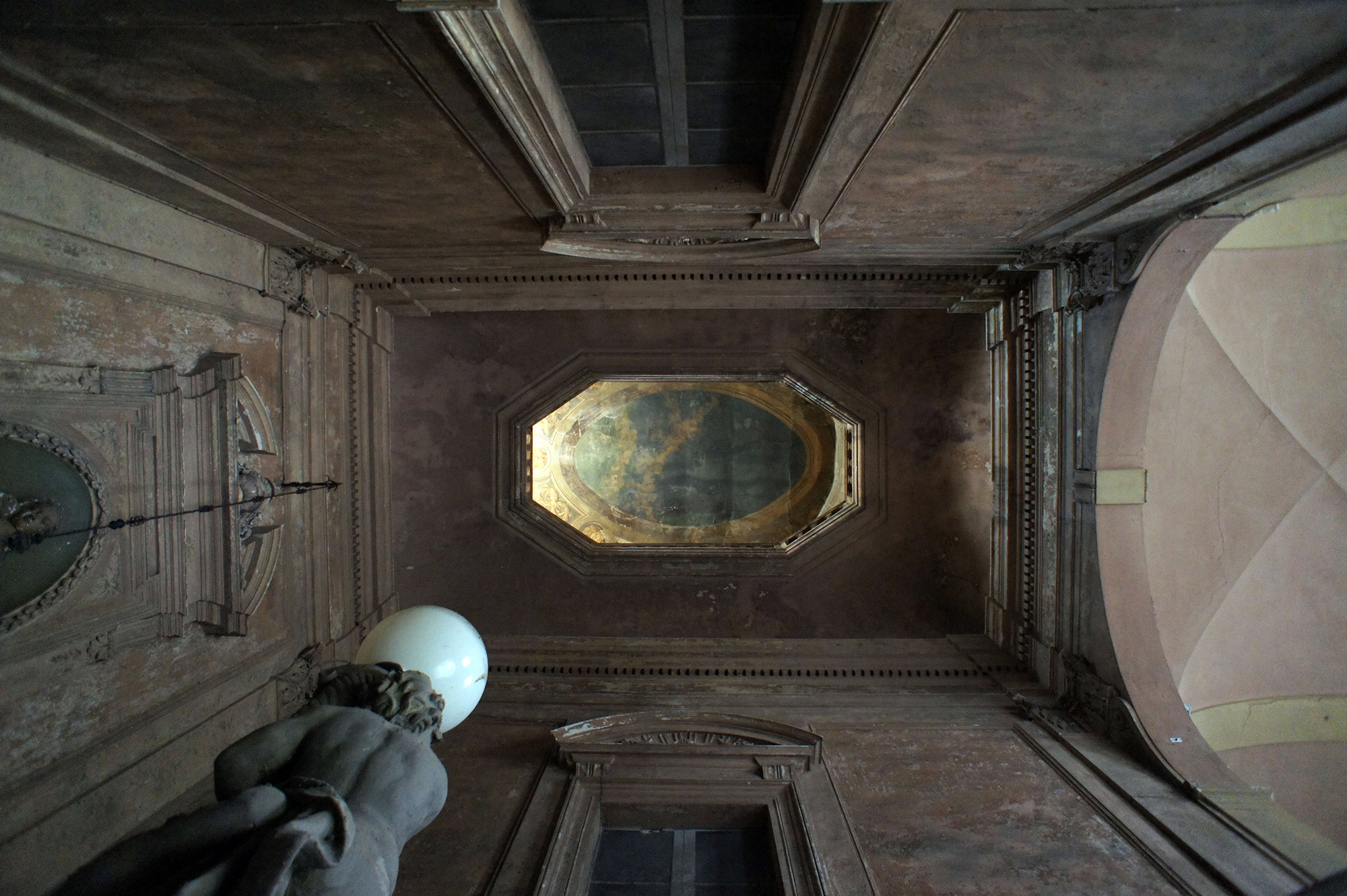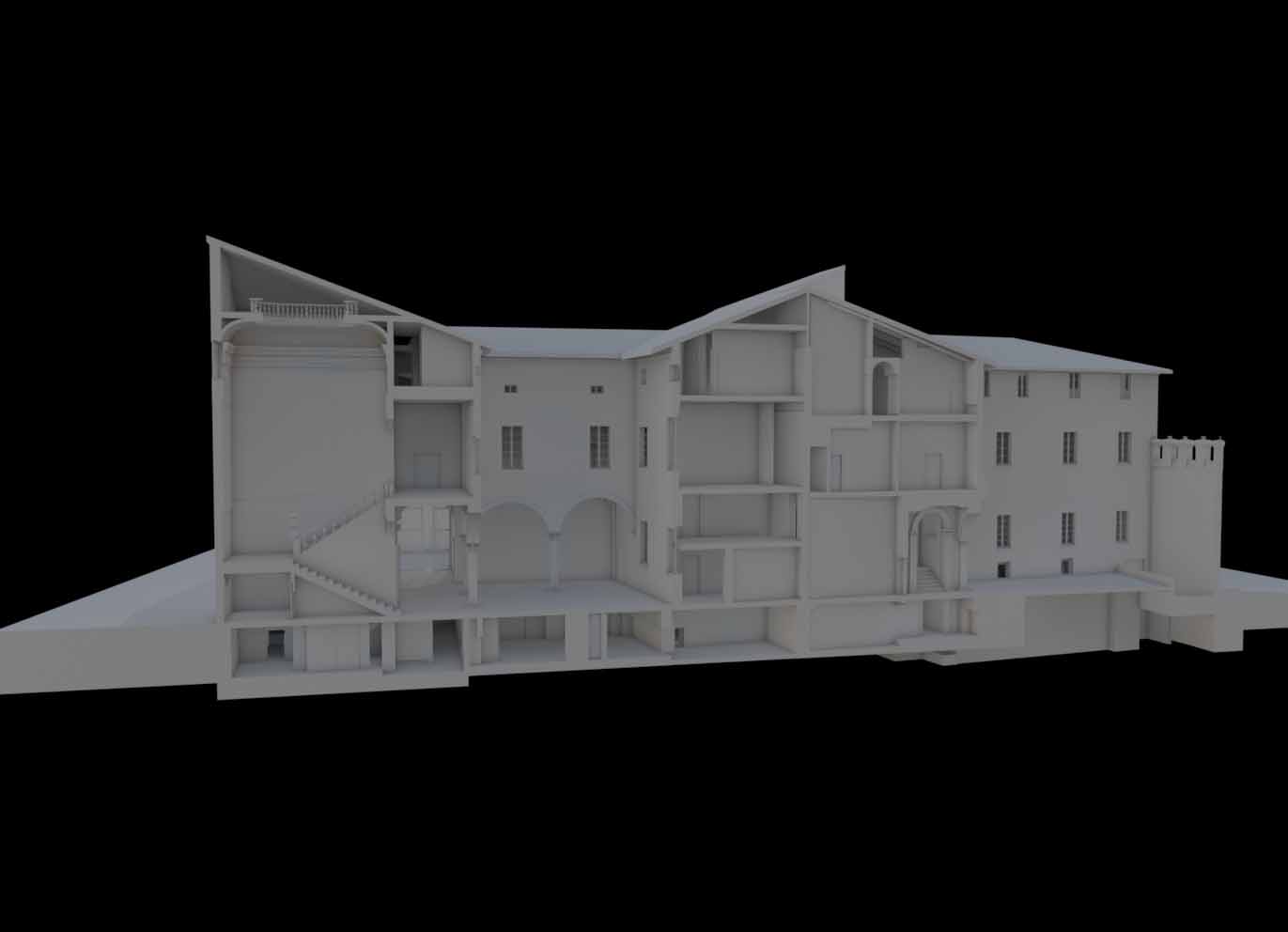The noble staircase of Palazzo Marconi was built on a pre-existing 16th-century staircase around the first half of the 18th century. From a morphological point of view, it consists of a barrel vault with pavilion heads, over which an octagonal opening with unequal sides to two axes of symmetry has been created. The structure consists of a series of wooden ribs composed of several elements arranged in such a way as to form two parallel semi-arches staggered from each other, connected by stringers. The ribs start from masonry piers that, by adding weight, reduce the lateral thrust of the semi-arch and end in a "ring", consisting of three rows of planks overlapping and nailed together to form a continuous non-deformable to the compression exerted by the semi-archs.
The continuity at the soffit is provided by the plaster caning anchored to the ribs. Above the oculus vault is a walkable gallery, characterised on the inner perimeter by a balustrade. The structure of the gallery consists of a planking that rests on one side on the wooden ring, on the other on wooden beams adjacent to the masonry, or in one case inside the wall itself. On these elements are grafted further wooden beams with a diagonal course, positioned in correspondence with the arelle walls that perimeter the gallery. The flooring of the gallery is in terracotta tiles arranged in a herringbone pattern.
The structural consolidation work involved only a portion of the vault-balcony-decorated ceiling assembly. The camorcanna structures were created as architectural elements, devoid of structural tasks, capable only of supporting their own weight. The two elements were treated with cleaning of the extrados by vacuuming and brushing, followed by consolidation with glass fibre mesh embedded in lime mortar.
The interventions on the balcony structures concerned the improvement of the relative connections between the parts: fixing of the wooden beams to the masonry by means of pre-drilled steel strips fixed to the wooden frames with mordanting screws and to the masonry with mechanical dowels; fixing of the planking to the frames and to the ring with mordanting screws; consolidation of the ring with a steel plate fixed to the extrados of the ring with mordanting screws.








